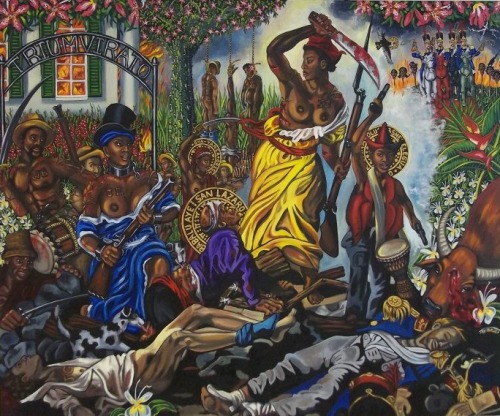#west african history
Carlota was a Lucumí-Yoruba resistance fighter who led a slave rebellion in Cuba during the mid-19th century.
Kidnapped by slavers as child, Carlota was brought from West Africa to the Matanzas province of Cuba. There she worked as a slave harvesting sugar cane on the Triumvirato sugar plantation. In response to the appalling work conditions and brutal treatment by the Spanish landlords, Carlota began to plan an uprising along with another slave woman named Fermina. However Fermina’s role in the planning was discovered by the Spanish, who had her severely beaten and imprisoned.
Despite this Carlota continued to organise the uprising. Known for both her intelligence and musical skill, she sent coded messages using talking drums to coordinate a series of attacks. As the drums were a traditional instrument among the West African slaves, the Spanish were unaware that the music was also being used a form of communication. On November 3rd 1843, Carlota led a raid which freed Fermina and a dozen other slaves from captivity. On November 5th the uprising began by at the Triumvirato and Acane sugar plantations, forcibly overthrowing the Spanish owners. These attacks were led personally by Carlota, who went into battle wielding a machete.
The uprising continued for a year during which the rebels liberated slaves from at least five large sugar plantations in the Matanzas, as well as from a number of coffee and cattle estates. While many historians have focused on the physical strength of the slaves, their rebellion also showed great sophistication, using advanced guerrilla tactics and coded communication to achieve their goals. Eventually however the forces of the Spanish Governor were able to put down the rebellion due to their overwhelming numbers.
Carlota and Fermina were both captured and executed, and 1844 became known as the ‘Year of the Lashes’ due to the tide of violence inflicted upon the slave population to bring them back into line. However Carlota’s actions created a legacy which inspired numerous subsequent rebellions against white slave owners in the Caribbean. Today there is a monument to her at the Triumvirato sugar mill.
Image credit: Carlota Leading the Slaves in Matanzas by Lili Bernard. Sourced from Atlanta Blackstar.
Post link

